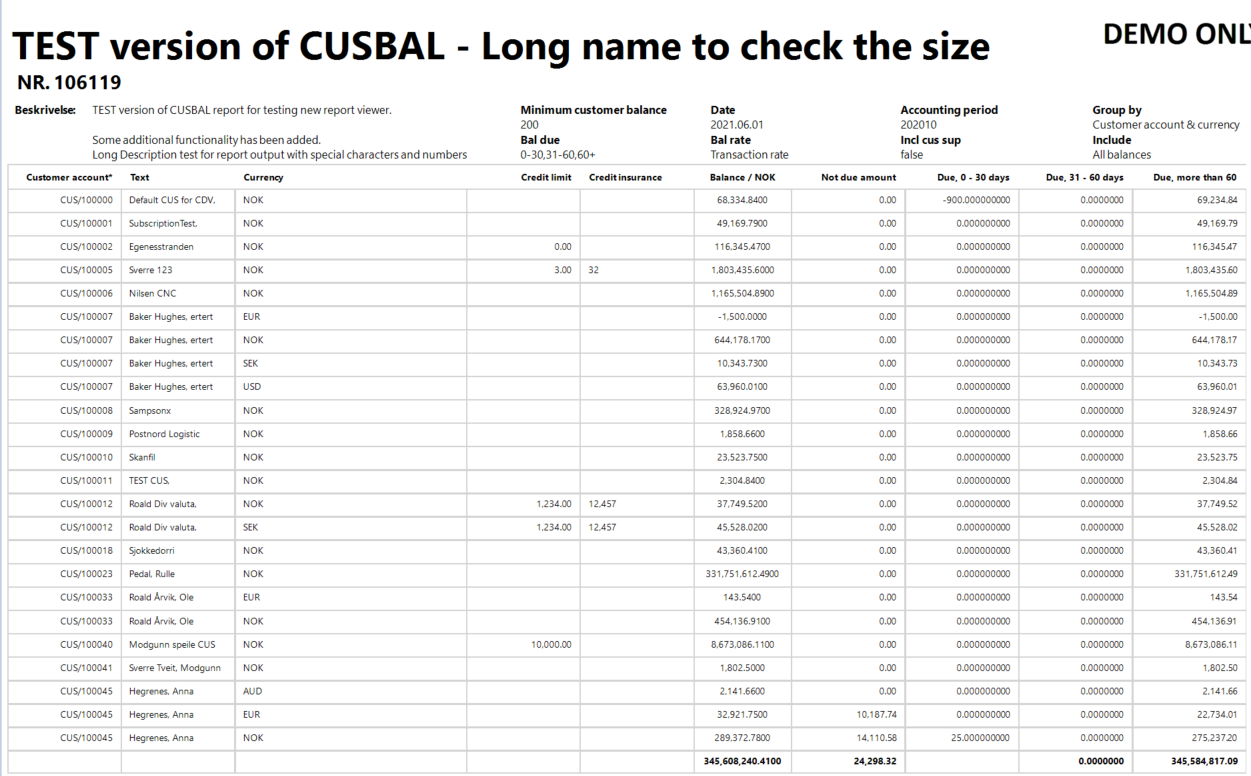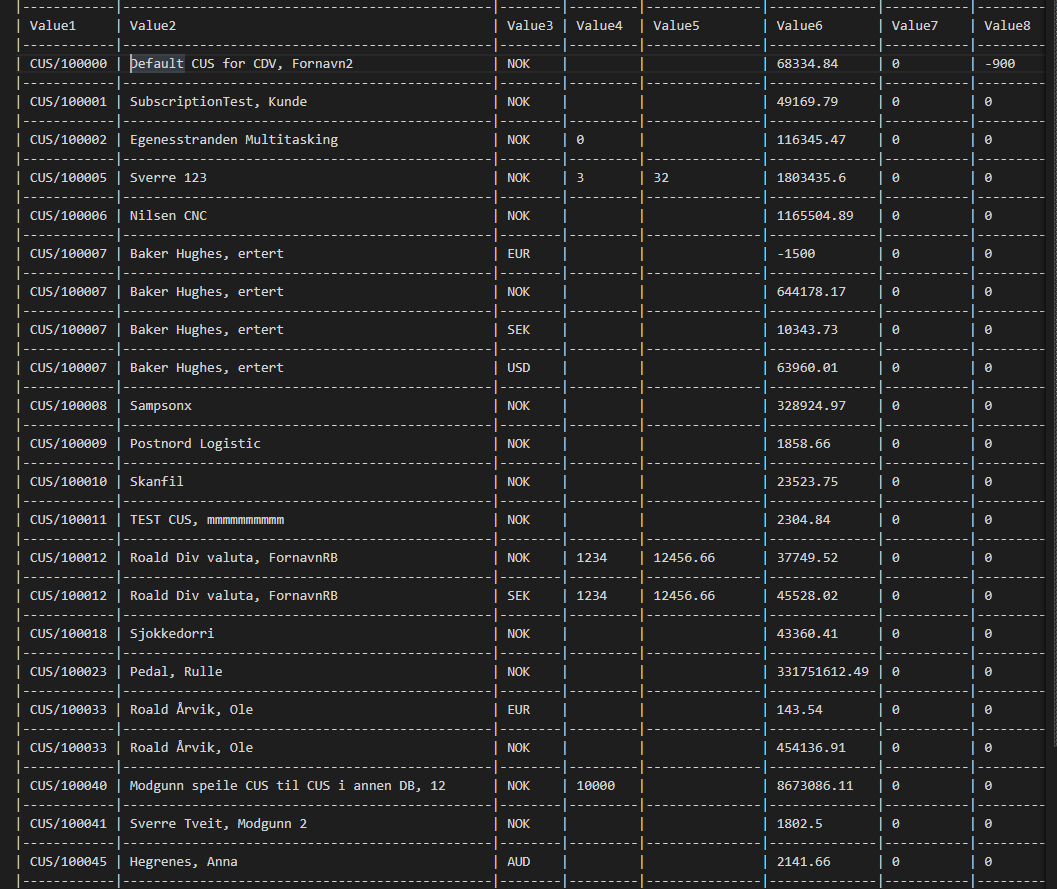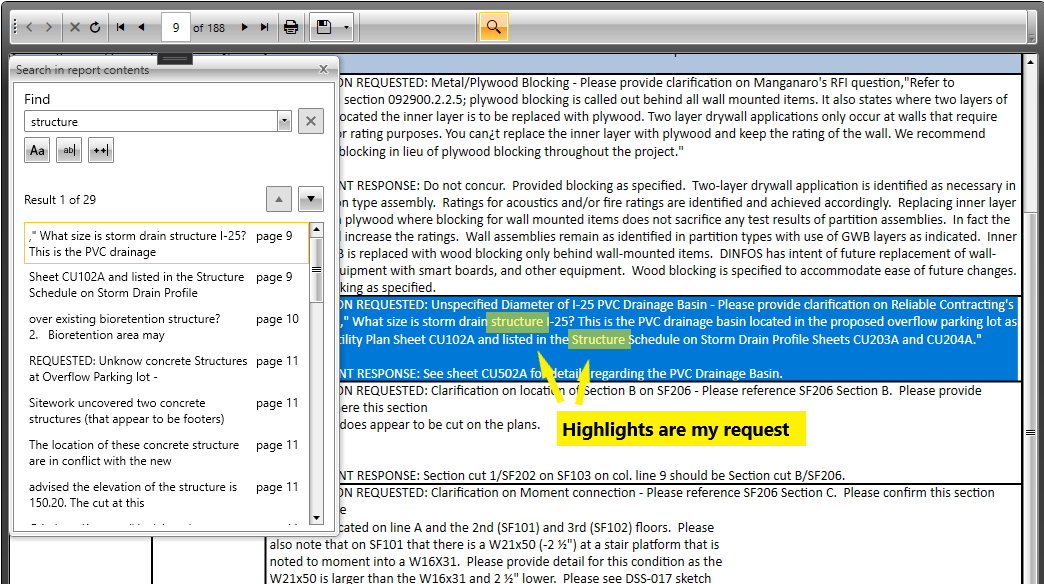Ways to reproduce the problem:
1. Create simple one table one column report, with right horizontal text alignment in the column.
2. Set a data source with multiple rows, with different lengths for the string, displayed in the table's column.
3. Render the report under Windows and under Linux - the column text on different rows will not be aligned properly on linux, but will be shifted to the left or right depending on string's contents and length.
I've done a bit reserch on PDF rendering, concerning libgdiplus "MeasureString" method deficiencies, and here's what I discovered so far:
1. The source of the problem is the fact that libgdiplus ends up using cairo to measure string glyphs, and it does it's font metric in whole pixels (integer), using the DPI of the context it is called in. In short, if the context is using 96DPI, cairo will use these 96DPI to calculate (and round) the font metrics, and to write strings eventually.
2. When libgdiplus is compiled to use pango, the problem is much smaller (several millimeter differences become part of the millimeter), because internally pango scales the measurement 1024 times, but it appears that this is not enough to resolve the problem.
3. When using libgdiplus (with or without pango inbetween it and cairo) for both "DrawString" and "MeasureString", everything is perfect, but the fundamental problem in Relerik Reporting to PDF is that it renders in a vector format, but uses text metering for pixel format - it uses System.Graphics.MeasureString which is a DPI vased metering (on Linux at least) but uses proprietary "PdfRenderer.DrawString" of the "PdfRendered" class, not the native Graphics.DrawString. Since cairo rounds every character glyph metrics to an integer value, the longer the string is, the larger the discrepancy will be between string rendering when PDF is viewed (based on floats/doubles) and Graphics.MeasureString (based on integers, at least on Linux).
Ways to resolve the issue:
1. The best way to resolve the issue is not to call Graphics.MeasureString at all, when rendering to vector based format, because it measures string based on the DPI on graphics context it is in. In other words, proprietary "PdfRenderer.MeasureString" must be implemented, which works with font glyphs directly, entirely using single or double precision math to calculate glyph dimensions and string dimensions.
2. Another, not so perfect, but HUGELY EASIER way is to set DPI of the rendering context of the PDF to a higher value, here's how:
For the moment, PdfContext's constructor looks like thispublic PdfContext(string ownerPassword, string userPassword)
{
this.dataFormatter = string.IsNullOrWhiteSpace(ownerPassword) ?
new DataFormatter() :
new DataFormatterEncypted(ownerPassword, userPassword);
this.bmp = new Bitmap(1, 1);
this.graphics = Graphics.FromImage(this.bmp);
this.hdc = this.graphics.GetHdc();
this.pdfFontCache = new PdfFontCache();
}So, a simple way to get around this is to use higer DPI Graphics object, like this:
public PdfContext(string ownerPassword, string userPassword)
{
this.dataFormatter = string.IsNullOrWhiteSpace(ownerPassword) ?
new DataFormatter() :
new DataFormatterEncypted(ownerPassword, userPassword);
this.bmp = new Bitmap(1, 1);
bmp.SetResolution(9600, 9600); //ADDED
this.graphics = Graphics.FromImage(this.bmp);
this.hdc = this.graphics.GetHdc();
this.pdfFontCache = new PdfFontCache();
}3. Another, more or less simple way to get around this, is to multiply font size and layout metrics by some number (I personally tried 16, 32, 128 and 256) before calling Graphics.MeasureString(), and dividing the result of the call by the same number after calling it. From my experience, 16 makes things MUCH better, and 128 is maybe enough to resolve 99.99% of the cases.
Attached is the result when rendered without multiplication (Linux-Orig.png) and when font size and layout methrics are multiplied by 128 before calling "MeasureString", and dividing the result by 128 afterwards (Linux-MultipliedBy128.png). On Windows the result looks exactly like the the corrected rendering on the "Linux-MultipliedBy128.png.
Figure 1 report is generated using the data source in figure 2. Data in column "Value2" is mapped to the column Text in the generated report.
In the below-generated report, text in row one "Default CUS for CDV" is truncated. A feature to make the user know there is more data to be shown will be great.
Figure 1
Figure 2
So, Adding an option to display an indicator such as “...” for truncated strings so that the viewers get to know there is more information to be displayed
Or
Provide an option to absolute break (display until last possible character) of the string rather than word-wrapping if there’s more content than the text box width.
After reviewing other users questions/issue it appears this hasn't been addressed.
When creating a TABLE group (not a group header/footer) the TABLE group header has no option of displaying on each page when the group spans multiple pages. The advice to make ColumnHeaders = True doesn't help because when you add a group header that row is inserted below the table's header row and thus this doesn't apply to the group header row.
I'd like to suggust a setting in the table group properties menu to display the header on each page, ideally with an option to display a suffix such as "cont."
Setting the ParametersAreaVisible and DocumentMapVisible to False in the Xaml, or in the initialization code of the WpfReportViewer doesn't hide the corresponding areas.
The issue is reproducible in .NET Core and .NET Framework.
Hi Team,
Thanks for your regular support.
I Want to hide the GroupFooterSection if I don't have any data to be displayed(zero records found case).
Please let me know the solution for the above case.
Regards
Ausfleet Team.
The @progress/kendo-ui package breaks the report viewer:
- With telerikReportViewer.kendo referenced - see the first attachment
- Without reference to the telerikReportViewer kendo widgets: see the second attachment
When you change a parameter, the parameter controls will be disabled while it fetches the data and then enabled again when the data returns, which is correct.
If you have a parameter with AvailableValues, the parameters will be disabled while it fetches the data but then never get enabled if the report has no data. You have to click the refresh or back button to enable them again.
If the table fits on one page, then exporting to pdf is fine. But if the table is divided into several pages and the ColumnHeadersPrintOnEveryPage set to true, then the textbox is displayed at the wrong place(overlapping with the table).
Currently, when using the Search widget in the WPF Report Preview the results highlight all of the text in the textbox that holds the matching search text. Although helpful, in cases where there is a long block of text it is less so.
It would be even more helpful if the search results highlighted only the text being searched, as can be seen in other apps, like browsers and document viewers.
The attached picture shows the current search widget, the interaction with the results and a report, and my requested change.



